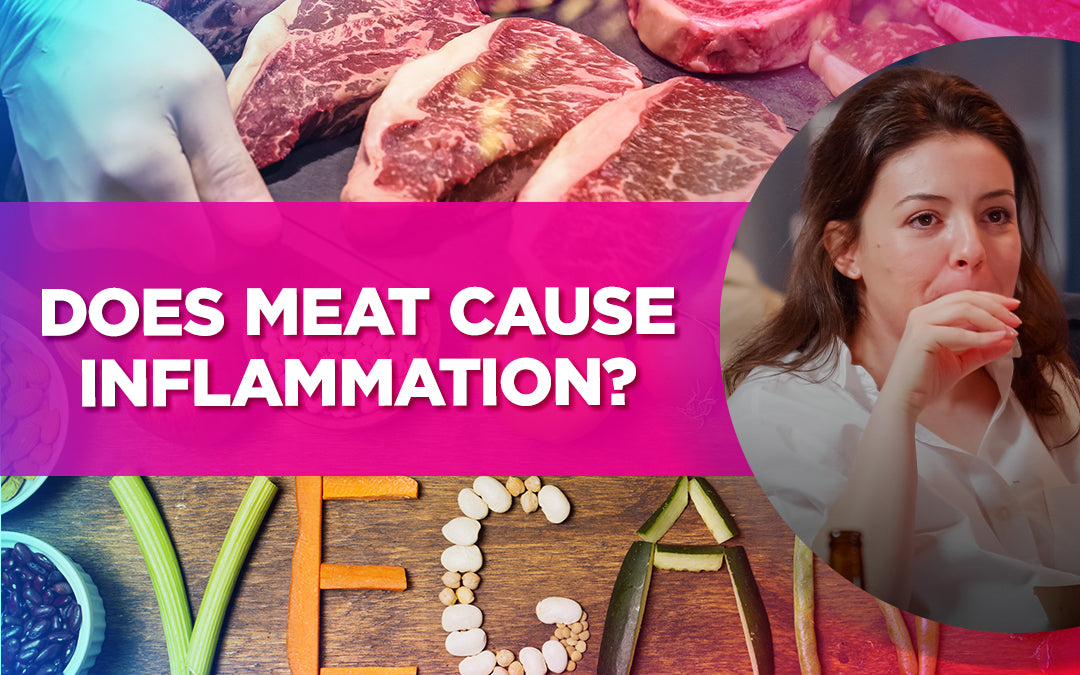What Does Gluten-Free Mean? Understanding Gluten and Healthier Alternatives
Dr. LivingoodShare

With the rise of gluten-free products and diets, more people are exploring what it truly means to go gluten-free. While some people genuinely benefit from cutting gluten out, many others may not fully understand what gluten is, why it can be harmful to some, or how to make smarter substitutions. So, let's dive into the details of gluten, gluten-free diets, and healthier ways to make changes in your diet.

What Exactly Is Gluten?
Gluten is a protein primarily found in wheat, barley, and rye, and it acts as the “glue” that holds food particles together, providing a chewy, elastic texture in bread and other baked goods. The word “gluten” is derived from the Latin word for “glue.” While it gives structure to food, gluten can also be difficult for some people to digest, leading to various symptoms and health issues.
When gluten enters the digestive system, it can irritate the intestines, especially in those with gluten sensitivity or celiac. These issues can lead to digestive problems, discomfort, and even hormone disruption. The biggest culprit? The fact that over 80% of the wheat in the U.S. is genetically modified, which can change the nature of gluten and make it even harder to digest.
Who Needs to Avoid Gluten?
Gluten intolerance or sensitivity affects a small percentage of the population. For people with celiac, gluten can trigger an autoimmune response, leading to damage in the intestines. For those with gluten sensitivity, symptoms may include bloating, headaches, fatigue, and joint discomfort, though it’s not as damaging as celiac.
However, for many people without a diagnosed intolerance, avoiding gluten may not be necessary. If you’re thinking about trying a gluten-free diet, make sure it’s for the right reasons and that you’re aware of the best way to avoid gluten without simply replacing it with other unhealthy options.
Gluten-Free and Hidden Gluten Sources
For those avoiding gluten, it’s essential to know where it hides. Gluten is primarily found in wheat and bran, but it’s also present in less obvious places, such as:
- Soy sauce
- Ketchup and sauces
- Maltodextrin (a food additive)
- Dextrin
- Hydrolyzed and autolyzed products
Being vigilant about reading labels is crucial if you’re gluten-free since many processed foods hide gluten in these forms. Always look for certified gluten-free products, as these are rigorously tested to ensure that they are gluten-free and safe for those with sensitivities.
The Gluten-Free Trap: Why Going Gluten-Free May Not Always Be Healthier
A common pitfall is replacing gluten with products labeled “gluten-free” but packed with other ingredients that might not be healthier. For instance, many gluten-free products are made with refined starches that are high in carbohydrates, such as rice flour, corn starch, and potato starch. These alternative ingredients can cause blood sugar spikes, potentially leading to insulin resistance or unwanted weight gain.
So, when removing gluten from your diet, it’s important not to simply replace it with gluten-free versions of cookies, bread, and snacks. Remember, a gluten-free cookie is still a cookie and will contain sugar, fat, and possibly other ingredients that can be just as detrimental to your health.

A Better Alternative: Try Going Grain-Free
Rather than focusing solely on gluten, consider reducing or eliminating grains from your diet. Grain-free diets naturally eliminate gluten and can help you avoid the high carbohydrate content found in many gluten-free products. When you cut down on grains, you’re more likely to rely on nutrient-dense, whole foods that provide essential vitamins, minerals, and fiber.
Here’s a breakdown of what to focus on when transitioning away from gluten:
- Cut Down on All Grains: Instead of just avoiding gluten, focus on reducing grains altogether, especially those that are highly processed or genetically modified.
- Opt for Nutrient-Dense Foods: Aim to get your carbohydrates from sources like vegetables, fruits, and legumes, which provide fiber, vitamins, and minerals without the spike in blood sugar.
- Include Clean Proteins and Healthy Fats: Include quality protein sources such as lean meats, fish, and eggs, as well as healthy fats from avocados, nuts, seeds, and olive oil.
Recognize Gluten-Free Foods Aren’t Always a Health Solution
Simply replacing regular cookies, bread, or snacks with gluten-free alternatives doesn’t automatically make them healthy. For example, gluten-free baked goods often contain high amounts of sugar and refined starches, which can impact blood sugar levels. The key is to choose whole foods over processed foods, even if they are labeled gluten-free.
An easy rule of thumb to follow: if you’re choosing a product just because it’s labeled gluten-free but it’s still highly processed, it may be wise to look for a whole-food alternative instead.
Watch Out for Toxic Additives
Certain additives used to replace gluten in processed foods can cause digestive issues, even in people without gluten sensitivity. Watch out for these common additives often found in gluten-free products:
- Monosodium Glutamate (MSG): Often used as a flavor enhancer, MSG can contribute to headaches, bloating, and digestive discomfort.
- Maltodextrin: A high-glycemic ingredient that can spike blood sugar.
- Modified Food Starch: This thickening agent is often made from corn or wheat, which can be hard to digest.
By avoiding these and similar ingredients, you’ll keep your diet clean and focused on health rather than on mere convenience.
Healthy Alternatives to Refined Gluten-Free Foods
So, what should you replace gluten-containing foods with? Here are a few options:
- Leafy Greens and Vegetables: Spinach, kale, broccoli, and cauliflower are low in calories, high in fiber, and packed with vitamins.
- Fruits in Moderation: Berries, apples, and pears provide natural sugars and fiber while helping you avoid blood sugar spikes.
- Healthy Fats and Proteins: Foods like avocados, nuts, seeds, and fatty fish like salmon support your metabolism and keep you full.

Key Takeaways
Going gluten-free can be beneficial for those with a true sensitivity or celiac. However, for the average person, focusing on a grain-free, nutrient-dense diet is a smarter move. Avoid replacing gluten with other processed gluten-free options that are high in starches and sugars. Instead, aim to consume more whole foods and cut back on unnecessary carbohydrates.
By making thoughtful dietary changes and focusing on natural, whole foods, you can reduce your intake of gluten and potentially improve your overall health. Remember, a gluten-free label doesn’t always mean it’s healthier, so make choices that fuel your body with real, nutritious foods.
Share
Related Articles
Most Popular
-
The 5 Amazing Benefits of Omega-3s
August 13, 2024 -
Healing Your ‘Second Brain’: The Path to a Healthier Gut
August 13, 2024







